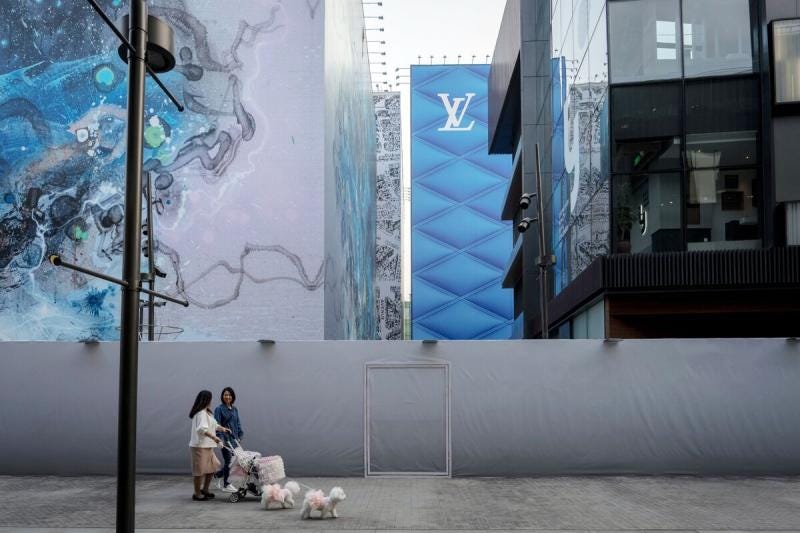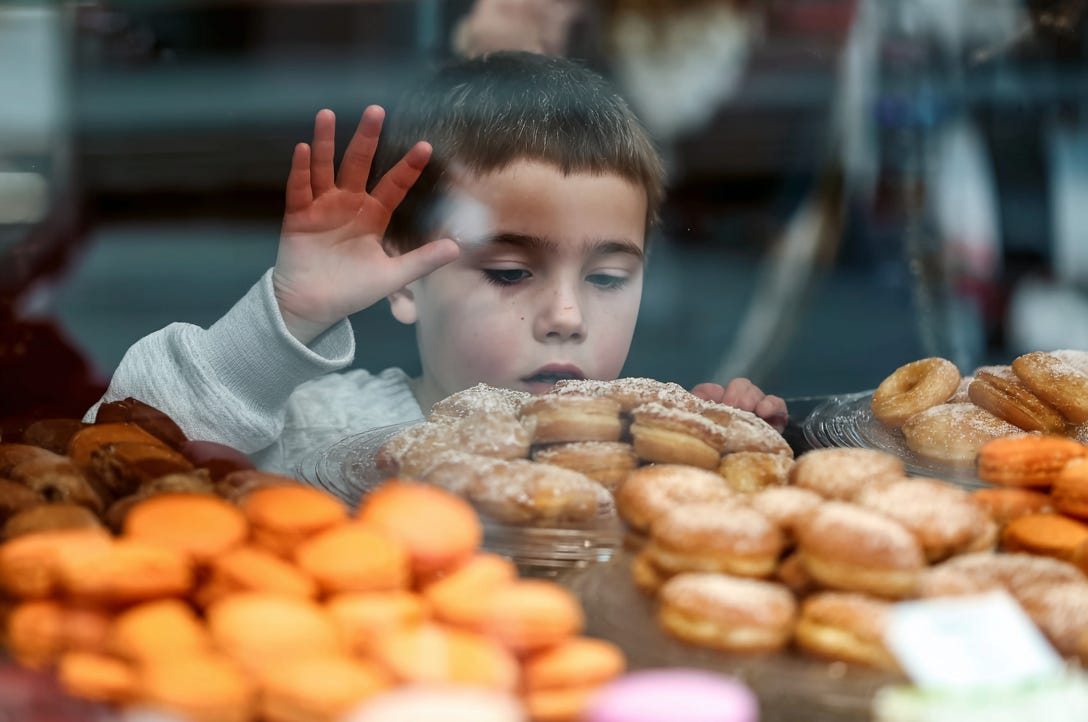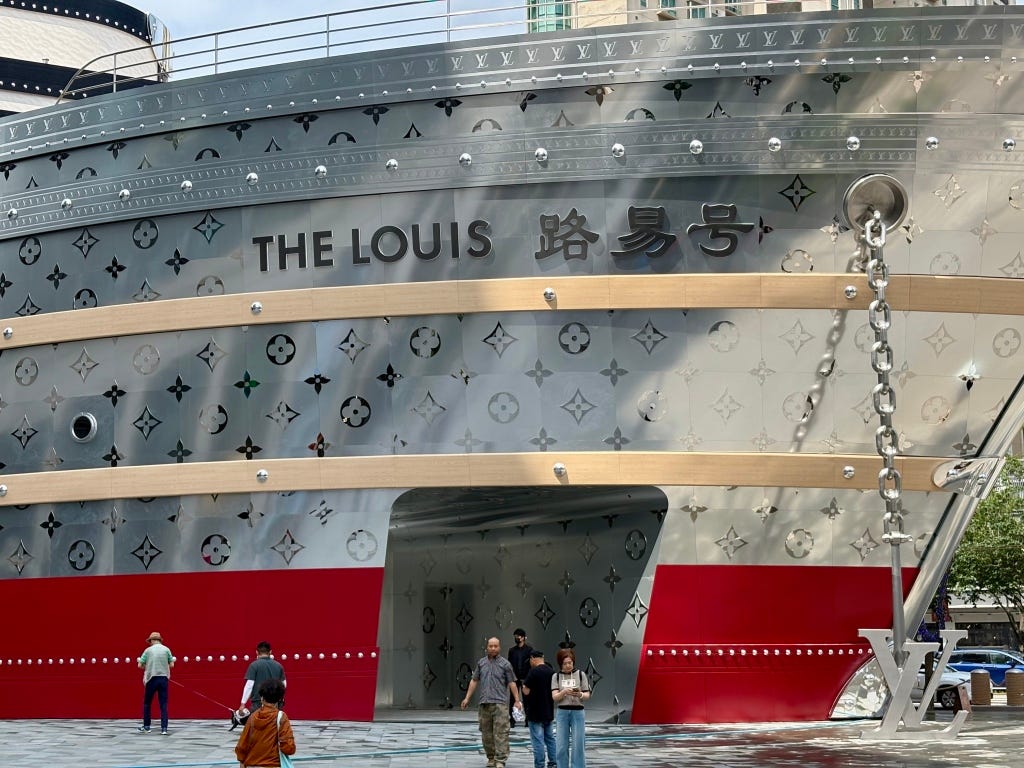The Ant, The Grasshopper, and The Luxury Paradox
Luxury set for significant recovery by of 2026 End (UBS)
Why luxury brands that retreat now will miss the 2026 recovery entirely
6 min read
TLDR
UBS forecasts luxury recovery by 2026, but brands are panicking instead of positioning. While competitors slash cultural budgets and retreat to digital, smart money builds memory, equity, and presence.
The winners won't have the biggest media spend—they'll be the ones who created real worlds while others shouted into algorithmic void. Physical experience is becoming premium again as digital platforms decay into "enshittification."
Build belonging, not posts. Context > Content.
Aesop knew something about market cycles. In his fable, the industrious ant spends summer gathering provisions while the grasshopper fiddles away the warm months. When winter arrives, one thrives while the other starves.
The moral, we're told, concerns prudent preparation versus careless indulgence.
But there's a twist Aesop didn't explore: what happens when both the ant and the grasshopper panic at the first sign of frost?
That's where luxury finds itself today. UBS forecasts recovery by 2026, yet brands are reacting as if it's 2008 again: slashing budgets, axing activations, retreating into digital bunkers. This isn't strategy. It's panic. The clever money isn't vanishing. It's positioning.
While competitors go silent, the thoughtful are building memory, equity, and presence.
💬 What are you seeing in your industry? Are brands pulling back or doubling down? Leave a comment below.
The Fundamental Misread
Watch how brands cut their cultural budgets first. Physical experiences, brand worlds, the expensive business of creating desire: all sacrificed for quarterly optics. The thinking seems rational: if customers aren't buying, why invest in experience?
But this betrays a profound misunderstanding of what luxury actually sells. These aren't widget manufacturers optimising conversion funnels. Luxury trades in time, texture, narrative. The very qualities that require cultivation during lean periods, not abandonment.
UBS offers illuminating perspective here. Luxury stocks have been oversold for three consecutive seasons: a condition that historically precedes outperformance in 76% of cases. Sector earnings sit just 9% above trend, compared to 50% at peak. Valuations have reached 15-year lows by certain measures.
The data suggests cyclical downturn, not structural collapse. Yet brands are retreating as if consumer aspiration itself has fundamentally shifted. They risk missing the recovery not through lack of resources, but through abandonment of the cultural territory that makes luxury desirable.
Enduring Principles
Memory Architecture
Consider the subtle choreography of influence at work. Brand presence needn't require lavish spend, but rather precise interventions: micro-activations, shared rituals, moments that lodge in consciousness. The intimate salon over the grand spectacle. The archive viewing over the billboard campaign. These create what psychologists call memory anchoring: long-term preference patterns that outlast economic cycles.
The Alchemy of Longing
When purchasing power contracts, imagination expands. This isn't merely compensatory behaviour; it's luxury's secret weapon. Scarcity combined with thoughtful visibility doesn't diminish desire; it intensifies it. The brands maintaining aspirational presence during constrained periods build emotional equity that converts powerfully when conditions improve. The art lies in remaining visible without pushing purchase: letting people inhabit your world mentally before they can afford entry.
"When people can't buy, they dream. The brand that remains aspirational builds emotional IOUs that compound over time."
Reciprocity and Belonging
Smart brands understand they're earning emotional IOUs through strategic generosity. Invite future customers into low-barrier, high-signal communities now. Archive launches for enthusiasts. Closed previews for cultural tastemakers. Newsletters with genuine narrative depth. These touchpoints cost relatively little but create luxury's ultimate product: belonging.
Cultural Institutionalisation
Position your brand as cultural infrastructure, not merely commercial entity. Support emerging voices. Host conversations that matter. Become the gathering place for interesting minds, regardless of immediate purchasing intent. This builds cultural capital that compounds across decades, transforming brands from vendors into institutions.
📤 If this resonates, share it with someone who needs to hear it.
Digital Delusion
Meanwhile, brands redirecting constrained budgets toward digital platforms are betting on a fundamentally compromised system. We're witnessing what Cory Doctorow aptly terms "enshittification": the predictable decay cycle where platforms prioritise monetisation over user experience.
The evidence accumulates daily. Instagram morphs into TikTok with inferior UX. Meta feeds serve 80% content from strangers rather than chosen connections. Attention online is no longer earned through quality or relevance: it's gamed through algorithmic manipulation.
Much of your supposed audience isn't human anymore. AI content farms, engagement bots, synthetic metrics create illusions of reach while delivering none of the depth that builds lasting preference. Brands aren't buying attention; they're subsidising an attention-extraction machine designed to commoditise every interaction.
For brands depending on story, texture, emotional resonance (the foundational elements of luxury appeal) this environment proves particularly hostile. You become just another scroll-through in an algorithmic lottery optimised for engagement, not attachment. It's the strategic removal of meaning in service of scale.
💬 Have you noticed the decline in digital platform quality? How are you adapting your strategy?
Inevitable Return
Something curious unfolds offline. Ultra-high-net-worth individuals delete social accounts. Younger affluent consumers retreat into WhatsApp groups and Discord servers. They're not tuning in: they're filtering out.
Loneliness reaches historic peaks, triggering predictable correction. Back to browsing actual stores. Back to clubs, salons, shared experiences that feel genuinely rare. We're witnessing 1990s social patterns return, but with contemporary strategic sophistication.
Physical presence becomes premium commodity again. The store as cultural space. The event as narrative device. The club as identity formation. This isn't nostalgic regression: it's market evolution responding to digital oversaturation. Like a sculptor revealing form by chipping away the unnecessary, culture is removing the digital noise to expose human connection.
The pendulum swings back to human-scale interaction, and the brands positioned for this shift will capture disproportionate value.
Principles for the Interim
Build worlds, not posts. Create memory, not metrics. Think human, not scalable. Don't disappear: become unforgettable.
When purchasing power returns, customers won't simply resume old patterns. They'll choose worlds they want to inhabit, brands that remained present during constrained periods, companies that treated them as complete humans rather than conversion opportunities.
The winners of 2026 won't be those with largest media spends. They'll be those who built something real while others shouted into algorithmic void. Who created spaces for dreaming when budgets tightened. Who understood that luxury's fundamental business is selling tomorrow's identity, not today's transaction.
"Each interaction becomes a diplomatic treaty between human aspiration and brand possibility."
This is the quiet work of cultural positioning. Less visible than advertising, more valuable than awareness. The patient cultivation of desire that transforms brands from vendors into institutions.
💬 What's your take on the return to physical experiences? Are you seeing this shift in your work? Let's discuss in the comments.
A bit about me…
I'm a fractional creative director and strategist specialising in brand experience, storyliving, and immersive environments. I come in and move the needle where it matters. I help premium and luxury brands build presence that lasts through physical formats, narrative depth, and cultural nuance. If you're rethinking relevance beyond digital churn, let's talk about building something people actually remember.
I'm thinking about holding a strategy war-room on this for professionals who want to know what they can do to lay the groundwork for the next market revival, but don't want to eat all their seed corn while waiting for spring. If you're interested, you can drop me a message on LinkedIn or my email: kdoria@insogni.com
What did you think of this piece? Hit reply or leave a comment ~ I do read them.






